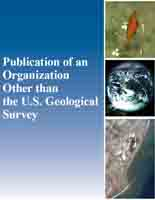Aerial surveys are routinely conducted to estimate the abundance of wildlife species and the rate of population change. However, sightability of animal groups is acknowledged as a significant source of bias in these estimates. Recent research has focused on the development of sightability models to predict the probability of sighting groups under various conditions. Given such models, we show how sightability can be incorporated into the estimator of population size as a probability of response using standard results from sample surveys. We develop formulas for the cases where the sighting probability must be estimated. An example, using data from a helicopter survey of moose in Alberta (Jacobson, Alberta Oil Sands Research Project Report, 1976), is given to illustrate the technique.


